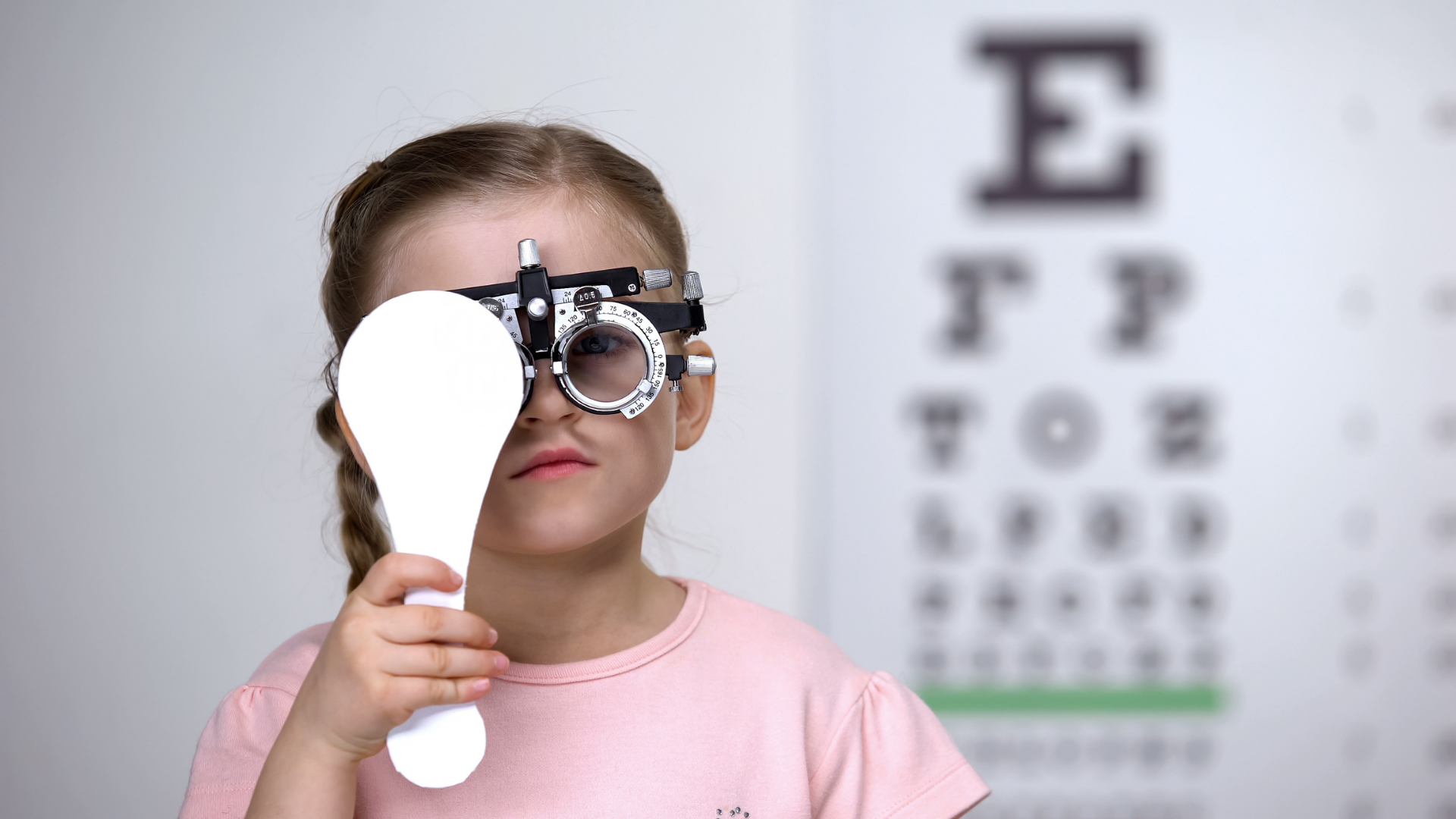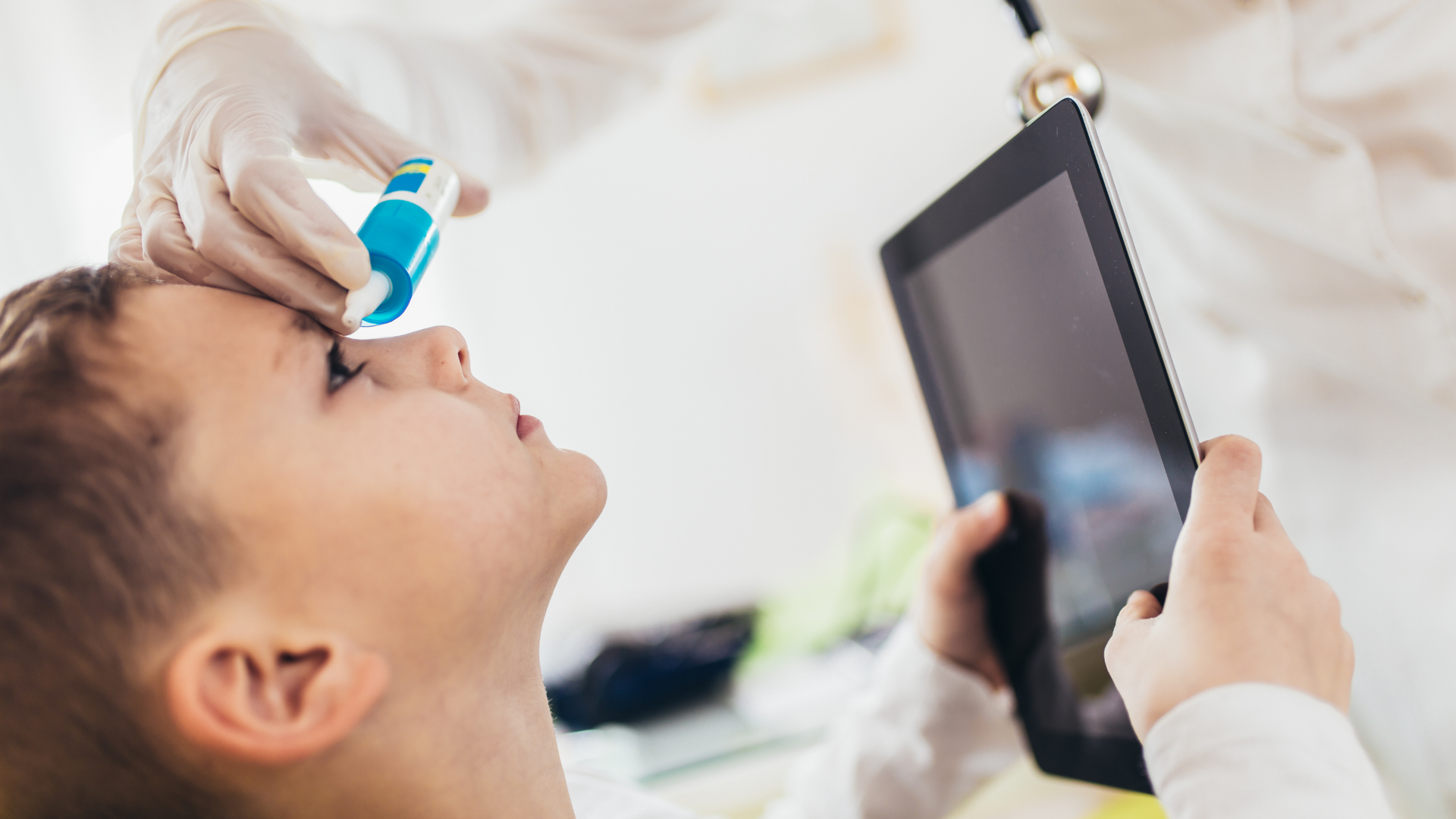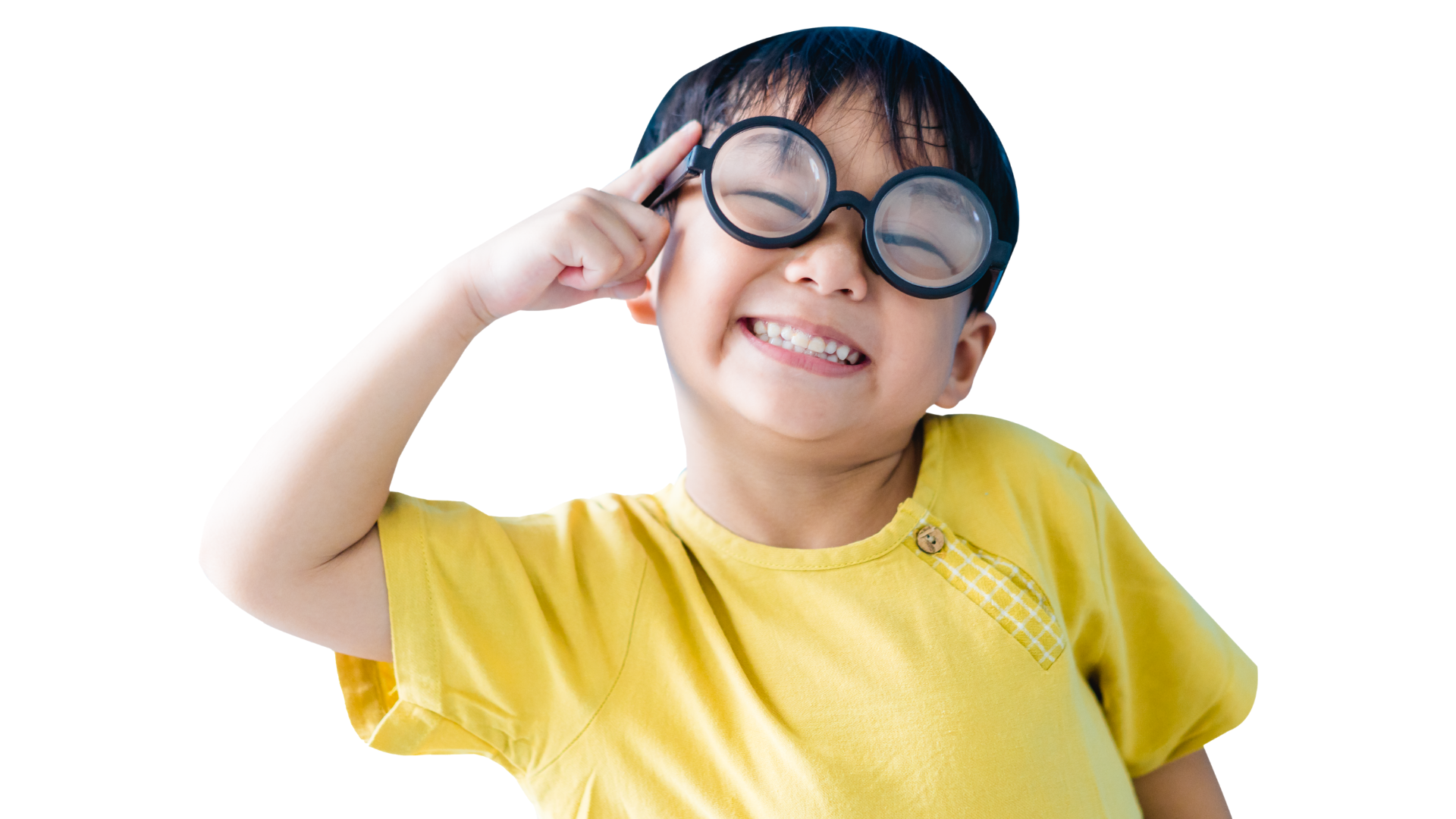Some experts predict that by 2050, half the world's population will be myopic, with 10% having high myopia. Local university research shows the peak period for myopia in children is ages 6–12, and the myopia rate in Hong Kong is higher than nearby Asian cities or even Europe. Even among adults, Hong Kong has the highest myopia rate in the world.
Myopia can progress rapidly as a child's eyes develop, especially between ages 6–12, when myopia may increase by around 100 degrees per year. For some, it keeps progressing until about age 18. Besides, eye length is also affected by genetic reason, if parents have longer eyeballs or high myopia, their children are more likely to be myopic.
Spending long hours reading up close, excessive screen time, and lack of outdoor activity all speed up myopia progression. Eye muscles need to relax regularly; inconsistent reading distances, poor lighting, and long hours on devices can cause eye fatigue and affect eye and body development.

When myopia exceeds 6 diopters (or 600 degrees), it's considered high myopia, which can lead to early cataracts, glaucoma, retinal detachment, and macular degeneration. It's recommended that children have vision screening at age 3–4 to check for eye conditions like amblyopia or strabismus, and another examination at primary school (around age 6). If a child is already myopic, check-ups should be done every 6–12 months; if parents have high myopia, examinations should be even more frequently, then yearly once stable.
A recent CUHK study found that 0.05% atropine eye drops can reduce the risk of myopia by 50%. Early eye examinations are especially important for kids with a family genetic of high myopia as myopia can be prevented.

Common methods to control myopia include wearing optical defocus glasses, while using orthokeratology (OK) lenses or atropine eye drops should be evaluated and prescribed by a doctor.
Multiple medical studies have proved that low-concentrate atropine can help slow myopia progression, requiring daily eye drops. Atropine comes in different concentrations (0.01%, 0.05%, 0.125%), and doctors will choose the right one based on each patient's needs.
Common side effects after using atropine eyedrops include blurred near vision, light sensitivity, and dry eyes; some may experience facial flushing or fever, but these are more common with higher concentrations.

Orthokeratology (OK) lenses work by reshaping the cornea to create peripheral defocus, slowing eye elongation and myopia progression. These special contact lenses are worn in night time (or while sleeping), so kids don't need to wear glasses during the day (the reshaping effect lasts several hours to days). Parents should pay attention to lens hygiene, otherwise it can cause serious infections.
Optical defocus glasses use special lens designs to create peripheral defocus. The advantage is no risk of contact lens-related eye infections, but unlike OK lenses, glasses must be worn during the day.
In recent years, Hong Kong has seen breakthroughs like combining low-dose atropine with red light therapy and daytime myopia control contact lenses. However, all these treatments have different risks and benefits, and treatment needs to be personalized after consultation with doctors.

A: These screenings are usually just preliminary, mainly to identify if there are vision problems. If any issues are found, children are immediately referred to an eye specialist for further eye examination. Many early cases of myopia or other eye diseases may not be fully detected in basic screenings. In addition, some children may have more complex eye conditions that require early diagnosis and treatment advice from a specialist. Visiting a professional medical center for a comprehensive checkup helps detect problems early and allows timely intervention, which can effectively control myopia progression and protect your child's vision health.
A: Ophthalmologists have professional medical training and rich diagnostic experience, enabling children to receive more comprehensive and accurate eye exams. Apart from assessment of visual acuity, they examine the eye structure, retina, and also assess the risk of developing myopia. Ophthalmologists help to create a personalized treatment for myopia control for kids.
A: Myopia control strategies include wearing myopia control glasses or orthokeratology (OK) lenses, using low concentrate atropine eye drops, life style modification such as reducing near work, increasing outdoor activities, and maintaining good eye habits. Combining these methods can maximize the effect in slowing myopia progression. Parents should work with doctor to create a realistic and effective plan for myopia control of their kids.
A: Low concentrate atropine eye drops are widely used and relatively safe for controlling myopia in children. Most studies show that low concentrations (such as 0.01% or 0.05%) have few side effects, mainly mild and temporary ones like blurred near vision, light sensitivity, or dry eyes. Serious adverse reactions are rare. However, long-term use should still be supervised by a doctor to avoid misuse. Parents are advised to use atropine as directed by the doctor and have regular eye checkups to ensure safety and effectiveness.
Updated: 2025-07
Please note that all medical health articles featured on our website have been reviewed by Chiron Medical doctors. The articles are for general information only and are not medical opinions nor should the contents be used to replace the need for personal consultation with a qualified health professional on the reader's medical condition.